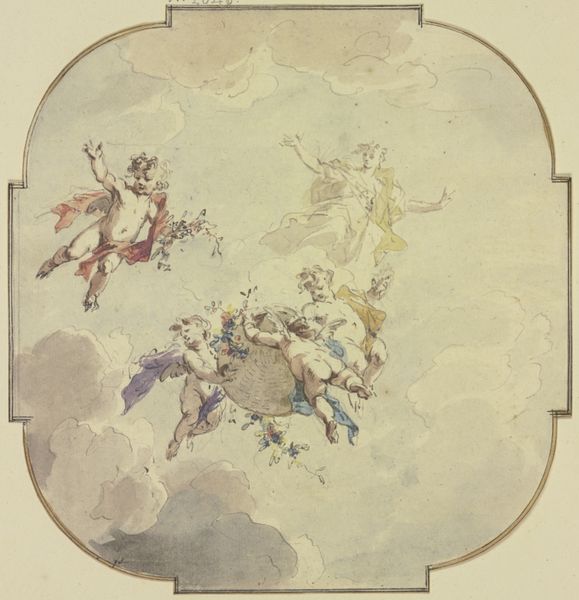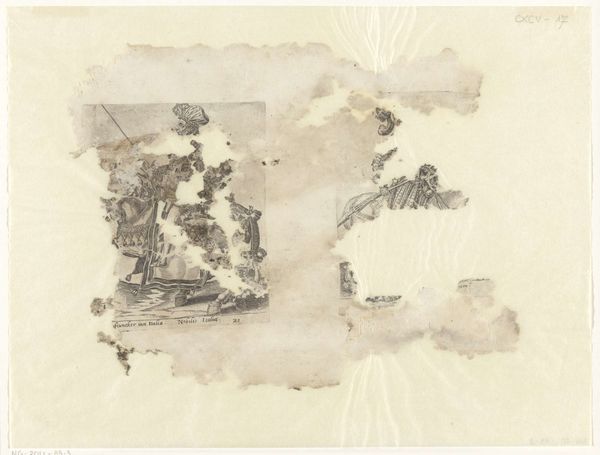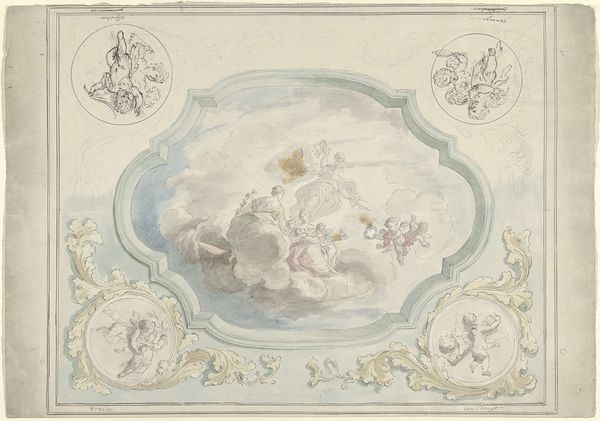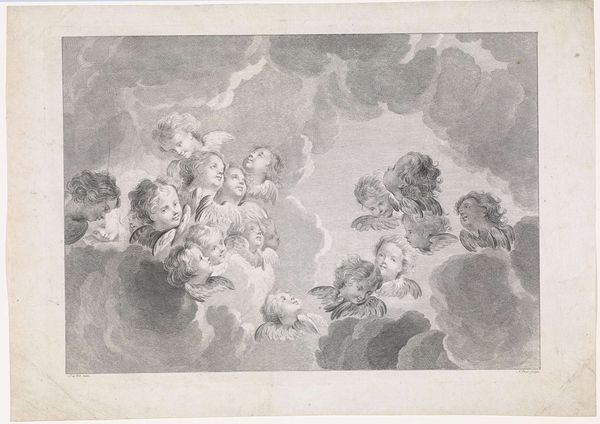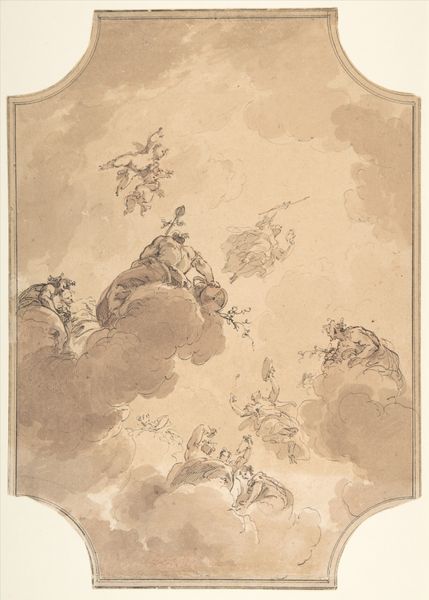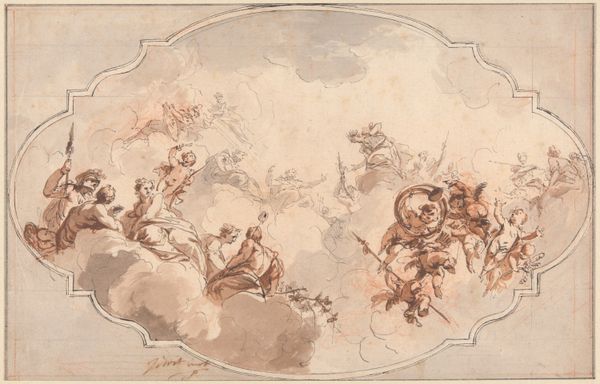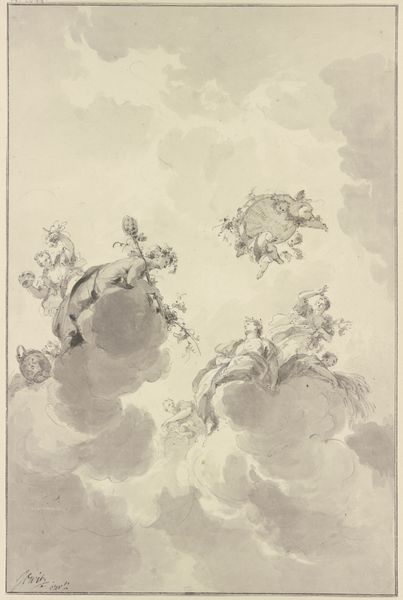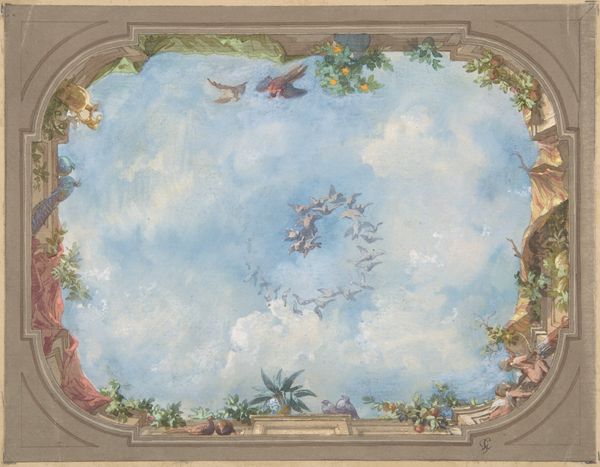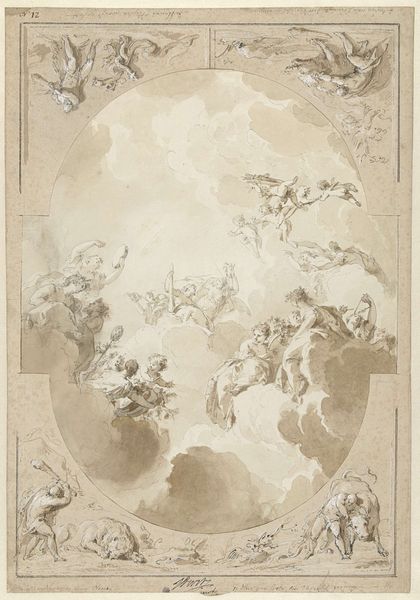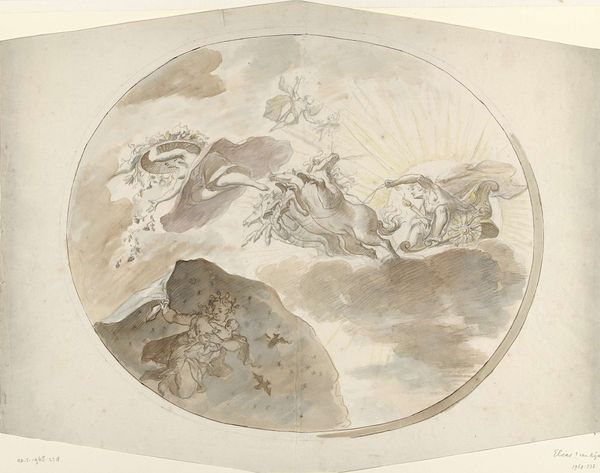
Ontwerp voor een plafondschildering met putti, bloemen en guirlandes 1677 - 1755
0:00
0:00
drawing, watercolor
#
portrait
#
drawing
#
water colours
#
allegory
#
baroque
#
landscape
#
figuration
#
watercolor
#
line
#
watercolour illustration
#
watercolor
Dimensions: height 247 mm, width 386 mm
Copyright: Rijks Museum: Open Domain
Curator: This watercolor drawing is a design for a ceiling painting by Elias van Nijmegen, created sometime between 1677 and 1755. The title is "Ontwerp voor een plafondschildering met putti, bloemen en guirlandes," which translates to "Design for a ceiling painting with putti, flowers and garlands." Editor: It evokes a lightness that makes it seem like a sketch of a dream. All those cherubic figures floating in the clouds surrounded by blooming flowers and garlands, all contained within the irregular frame – it's quite ethereal. Curator: Ethereal, yes, and deliberately so. These preparatory sketches served as crucial templates for larger ceiling paintings. Think of the complex scaffolding, the laborious process of transferring this design onto a plaster surface, and the sheer physicality required to execute this on a grand scale. The final paintings were intended to be awe-inspiring, symbolizing wealth and power. Editor: The putti themselves, these cherubic figures, are visual shorthands, aren’t they? They represent innocence, love, and divine favor, very common during the baroque period. The flowers and garlands echo the idea of earthly abundance, probably referencing the wealth of the commissioner. The watercolor technique imparts delicacy to their significance, doesn't it? Curator: Exactly. But even the choice of watercolor as the primary medium impacts the end result. Think about it; it enabled the artist and workshop assistants to quickly reproduce the design elements with subtle tonal variations before they move to final medium – and what about the affordability compared to other pigments or fresco for these preliminary designs. That access to the material is directly linked to the democratization of design in some sense. Editor: It brings to mind the history of these visual motifs. The cherubic figure predates Christianity, and it’s adapted throughout different cultures. The garland has been a long symbol of triumph and celebration too. It creates a through-line for human desire of wanting love and celebrate life. Curator: And Nijmegen utilizes these historical symbols in a very specific way, constructing an atmosphere intended to instill virtue while also legitimizing worldly power structures. This delicate design required practical mastery of materials and efficient teamwork to make it a reality. Editor: Seeing those familiar symbols combined so creatively adds a special charm. Curator: Exactly, and appreciating that tension is key to understanding the work's impact. Editor: Indeed, it leaves one with much to think about – the intersection of artistry, craftsmanship, and cultural expression.
Comments
No comments
Be the first to comment and join the conversation on the ultimate creative platform.
